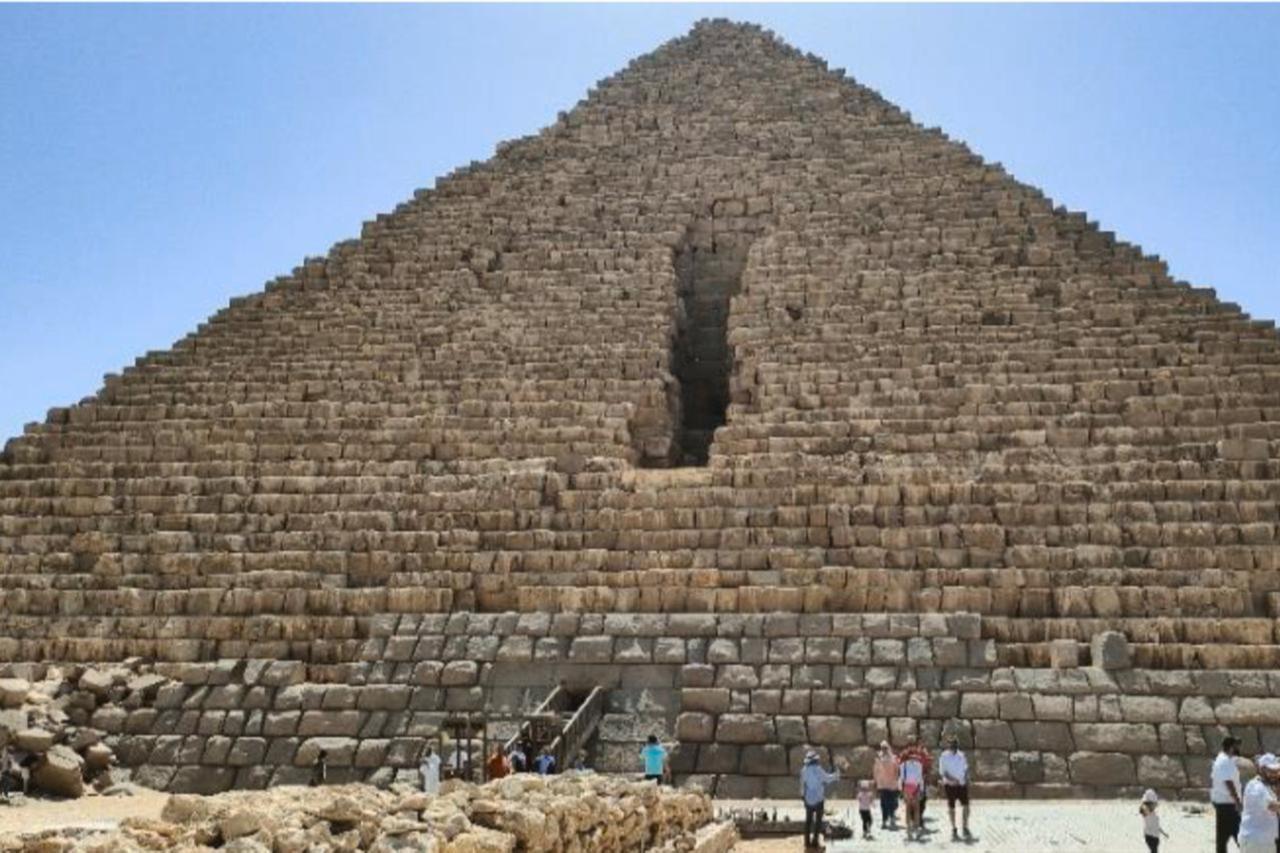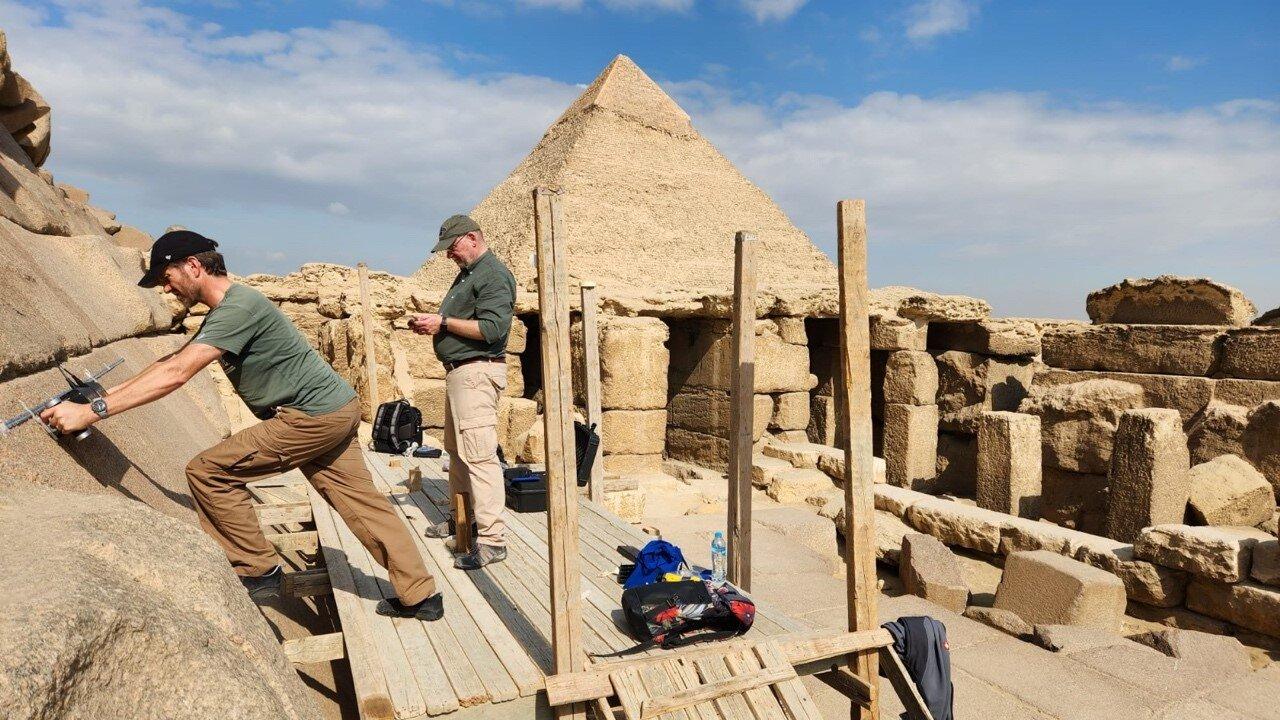
Scientists have identified structural voids behind the eastern face of Egypt’s Menkaure Pyramid, revealing the strongest evidence yet of a possible second entrance to the 4,500-year-old monument.
Using non-invasive technologies, including radar, ultrasound, and electrical resistivity tomography, a team led by Professor Christian Grosse of the Technical University of Munich detected two air-filled anomalies behind the eastern wall of the pyramid on the Giza Plateau.
The scans showed voids measuring approximately 1.4 meters deep, 1 meter high, and 1.5 meters wide, and another at 1.13 meters deep, 0.9 meters high, and 0.7 meters wide.
Researchers said the smoothness of granite blocks in a rectangular section, four meters high and six meters wide, resembled the finishing found only at the pyramid’s known northern entrance, raising the possibility of an ancient secondary entryway.
The findings support a hypothesis first proposed in 2019 by independent researcher Stijn van den Hoven, suggesting that the Menkaure Pyramid may contain an undiscovered entrance.

The study, published in the journal NDT & E International, marks the first time structural anomalies of this kind have been identified on the pyramid’s eastern side.
The Menkaure Pyramid, the smallest of Giza’s three major pyramids, was built around 2510 B.C. and stands approximately 60 meters tall.
Built for Fourth Dynasty Pharaoh Menkaure, its sarcophagus was lost at sea in the 19th century while being transported to Britain.
Tourists currently enter through the northern entrance to access burial chambers and narrow corridors.
The newly detected voids raise the possibility that uncharted chambers or passageways may still exist within the structure.
Researchers emphasize that further analysis is needed, but the anomalies mark a significant step toward understanding previously unknown features of one of Egypt’s most iconic monuments.